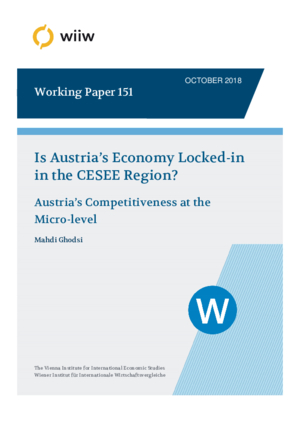Is Austria’s Economy Locked-in in the CESEE Region? Austria’s Competitiveness at the Micro-level
wiiw Working Paper No. 151, October 2018
39 pages including 5 Tables and 3 Figures
This paper analyses the competitiveness of Austrian manufacturing industries by comparing the performance of Austrian firms with the Western European firms using recent estimates of TFP across Wider Europe (EU-28 plus Western Balkans) during the period 2007-2015. According to the TFP estimates, Austrian firms with larger turnovers, and less employment, in regions with less regional-industrial concentration of labour have become more competitive in terms of TFP. Using firm’s TFP and other characteristics aggregated by industries across Wider Europe, a gravity model for exports is estimated. Results show that larger trade across countries in the sample is driven by intra-firm trade, better efficiency of industries in terms of simple average of TFP growth of firms and more allocation of capital to more efficient firms. Comparing the actual values of exports from Austria to CESEE with the predicted values of the gravity model, I found that since 2012 excessive exports were directed to Western Europe rather than to CESEE. In a robustness check using unilateral exports value, these interesting findings also confirmed that a potential Austrian lock-in effect in the CESEE region reversed and trade diverged to the more competitive market of Western Europe.
Keywords: firm performance, total factor productivity (TFP), gravity model, exports performance, lock-in effect
JEL classification: D22, D24, F14, F15, F23, L25
Countries covered: CESEE, EU28
Research Areas: International Trade, Competitiveness and FDI
